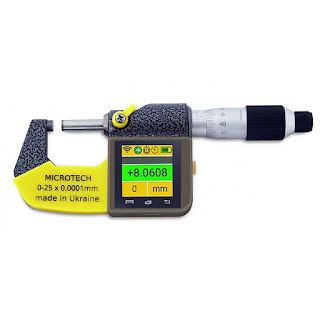In the previous article, we have talked about the differences between micrometer and caliper. As we know, a micrometer is not as versatile as a caliper. Micrometer only comes with a specific function in its unit. While calipers can cover several measurements in a single unit of the caliper.
As our observation on the web, these are our findings and also we include the pictures of the several models of micrometer currently available.
Based on The Dimension It Measures
1. Outside Micrometer
Image Credit: Wikipedia
2. Inner Micrometer
Image Credit: Wikipedia
3. Depth Micrometer
A single unit of caliper can be used to measure depth. A micrometer doesn't. There is a model called depth micrometer. The look can be seen on the following picture.
Image Credit: Pixabay
Based on Its Scale Model
1. Vernier Micrometer
Vernier micrometers manifest and employ vernier scale to magnify its measurement. Unlike other micrometers, this kind of micrometer has better resolution because there are three scales printed. They are the main scale on the barrel, the scale on the thimble, and the horizontal scale on the thimble which is called the vernier scale. The Vernier scale is also used in the vernier scale.
2. Dial Scale Micrometer
3. Mechanical Counter Micrometer
4. Digital Micrometer
Based on Its Anvil Shape
1. Flat Anvil Micrometer
It's easy to identify the anvil surface of the above picture. As you can see, it's flat.
2. Ball Anvil Micrometer
To quantify the thickness wall tube, a ball micrometer is recommended. It's less error compared to the usual anvil (Flat). Ball micrometer is applied in reloading.
3. Thread Micrometer
Image Credit: Wikipedia
4. Pointed Micrometer
5. Tubing Micrometer
6. Paper Micrometer
Designed exclusively to measure paper thickness.
7. Deep Throat Micrometer
8. Pitch Micrometer
9. Three Point Bore Micrometer
10. Three Flute V-Anvil Micrometer
That's all guys. Never ever again you get confused the types of micrometer. Another type is based on the reading. There are metric and imperial mic. Metric uses mm while imperial uses inch. This is just about how familiar you are. If you live in the USA, then you have to prefer the inch reading.









